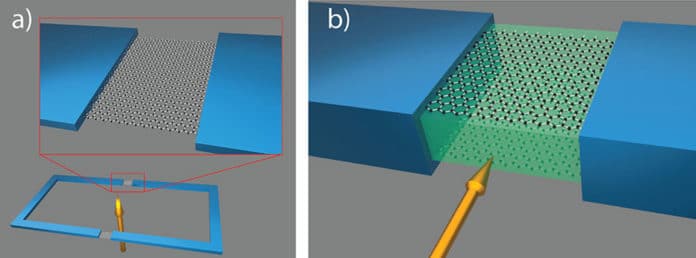Superconducting quantum interference devices or SQUIDs are widely used to measure very small magnetic fields. They are also used to monitor brain or heart activity. Along with that, earth sciences scientists used SQUIDs to characterize rocks’ composition or detect groundwater flows.
A typical SQUID comprises of a superconducting ring hindered at two points by an extremely thin film with normal conducting or insulating properties. These points, known as weak links, must be so thin that the electron pairs liable for superconductivity can tunnel through them. Nowadays, analysts started using nanomaterials, such as nanotubes, nanowires, or graphene, to fashion the weak links associating the two superconductors.
Because of their arrangement, SQUIDs have a critical current threshold above which the resistance-free superconductor turns into a conductor with ordinary resistance. This critical limit is dictated by the magnetic flux going through the ring. By estimating this critical current unequivocally, the specialists can determine the strength of the magnetic field.
Considering this, physicists at the University of Basel have developed a minuscule instrument to detect too faint magnetic fields.
Lead author David Indolese said, “Our novel SQUID consists of a complex, six-layer stack of individual two-dimensional materials. Inside it are two graphene monolayers separated by a very thin layer of insulating boron nitride. If two superconducting contacts are connected to this sandwich, it behaves like a SQUID—meaning it can be used to detect fragile magnetic fields.”
Dr. Paritosh Karnatak from Schönenberger’s team said, “In this setup, the graphene layers are the weak links, although in contrast to a regular SQUID they are not positioned next to each other, but one on top of the other, aligned horizontally. As a result, our SQUID has a tiny surface area limited only by nanofabrication technology constraints.”
The device is only around 10 nanometers high—roughly a thousandth of human hair thickness. It can trigger supercurrents that flow in minuscule spaces. Moreover, its sensitivity can be adjusted by changing the distance between the graphene layers. With the help of electrical fields, the researchers can also increase the signal strength, further enhancing the measurement accuracy.
Schönenberger of the project noted, “With the new SQUID, we can determine whether these lossless supercurrents are due to a material’s topological properties, and thereby tell them apart from non-topological materials. This is very important for the study of topological insulators.”
Journal Reference:
- David I. Indolese et al. Compact SQUID Realized in a Double-Layer Graphene Heterostructure, Nano Letters (2020). DOI: 10.1021/acs.nanolett.0c02412
